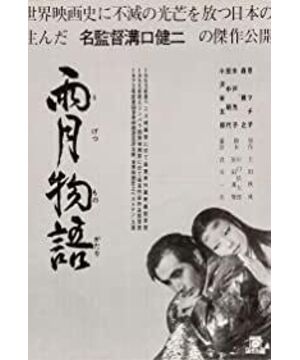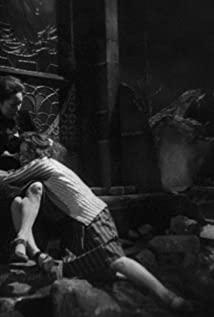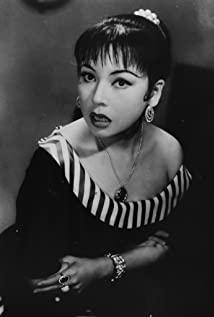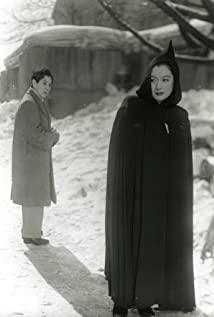"The Story of the Rainy Moon" uses such a panorama to easily express the war environment of the Warring States Period. The desolation of the natural environment and the panic in the social environment brought about by the military disaster made it the best stage for a story like Liaozhai. A man who wanted to make money from war, swearing to let his wife and children live a good life, met a stunning woman in troubled times, and suddenly forgot his virtuous wife and young children at home, and the people outside the city. A lonely and eerie elegant mansion in the grass, the shadow of the maid projected on the wall by candles, and the long and stern singing add to the atmosphere of the film.
The whole movie, like "Gion Song Girl", is quiet and beautiful. No matter how violently conflicting or painful the theme and plot are, the camera will always stand quietly behind the scene, describing all of this with the artist's consciousness, as if the author of the long scroll had cut his own painting into sections and placed them in front of the audience. In front of him, and then eloquently told his story.
The reason why the film was able to win the Silver Lion Award that year, in addition to the expression of Oriental beauty, of course, there are the factors of the theme. The two stories in the original work of "The Story of the Rainy Moon" originally had a certain war background. Mizoguchi Kenji mixed them together, which greatly increased the conflict of war and moral torture, which made him express the anti-war and women's feelings. The theme is more prominent. Like "Gion Song Girl", women are always patient, hard-working, and virtuous, while men are stupid, impulsive, and selfish. In the end, women always forgive men tenderly, pointing out the direction of their lives like a beacon. The ideals of women in Kenji Mizoguchi's films, though alien to today's feminism, are moving and sympathetic. When the male protagonist returns home and sees his wife mending his clothes under the candlelight, after all the moral torture, he just wants to sleep beside his family, while the audience outside the film But he was sighing for the heroine and the family.
View more about Ugetsu reviews










